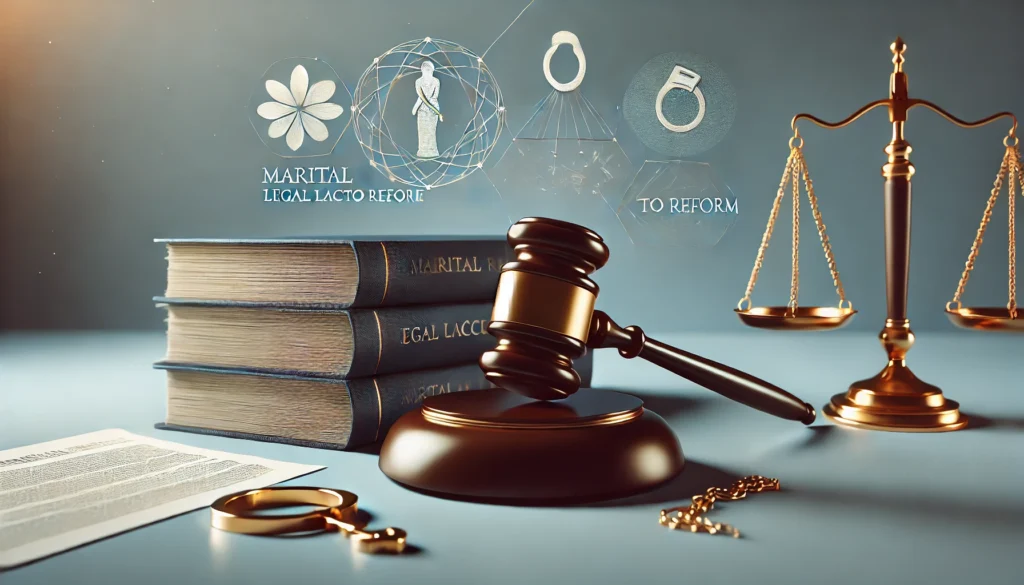Published On: 15th February, 2024
Authored By: Raaj Shekhar Mohapatra
Symbiosis Law School, Hyderabad
The hallowed date of 15 May 1978 etched itself not simply into the calendar of legal history but into the very conscience of our nation. It marked the day India’s nascent democracy took a decisive step towards reclaiming its bruised, but unbroken, spirit. For on that day, amidst the echoes of the Emergency’s chilling silence, arose the phoenix-like resurrection of our Constitution through the transformative flames of the 44th Amendment.
Like a weary traveler scarred by a treacherous journey, our Constitution bore the deep wounds inflicted by the draconian excesses of the 1975 Emergency. Fundamental rights, the bedrock of our freedom, lay trampled, their whispers drowned out by the cacophony of unchecked executive power. It was against this stark backdrop that the newly elected Janta Party embarked on a mission of constitutional redemption. The 44th Amendment, then, stands as a testament to their unwavering resolve, a meticulously crafted shield forged in the fires of adversity to forever immunize our democracy against the pernicious virus of emergency abuse.
The Shadow of the 1975 Emergency:
“The President has proclaimed Emergency. There is nothing to panic about” were the words that were announced by Prime Minister Indira Gandhi through All India Radio throughout the streets of India. The emergency spanned for a period of 21 months, during which most of the Political opponents of Indira Gandhi were imprisoned, the press was expurgated, as well as the citizens of India saw their fundamental rights being violated. Before the National Emergency, India witnessed a conflux of events which pointed to the position and stability of Indira Gandhi’s position being threatened. The first was The Navnirman Andolan in Gujarat, where a student-led protest against raising fees and rampant government corruption escalated into mass unrest, forcing the imposition of President’s rule. Additionally, the JP Movement led in Bihar under the leadership of Jayaprakash Narayan was inspired by the Gujarat protests, where the protestors were highly agitated and demanded for the Prime Minister’s resignation. And lastly, Indira Gandhi’s 1971 election win was challenged in the Allahabad High Court for electoral malpractices, exacerbating the existing unrest in the country. A confluence of escalating protests, legal hurdles, and economic turmoil ultimately paved the way for the controversial 1975 Emergency decree. Upon recantation of the national emergency, the national elections were called, where the political party represented by Indira Gandhi was utterly crushed by the opposing ‘Janta party’. The Government after getting into power had a major task of repealing the draconian laws which were used as a safeguard barrier by the people in power against any legal consequences of their actions. The Janta Party committed and constituted a committee that brought forward the Constitution (Forty-third Amendment) Act, 1977, and the Constitution (Forty-Four Amendment) Act, 1978 (44th Amendment).
Purpose of the 44th Amendment: Preventing abuse of Emergency Powers:
Before the 44th amendment, India’s emergency provisions wielded a blunt sword in the form of “Internal Disturbance”, which was surprisingly enough for the upper echelons to invoke extraordinary powers. The Janta Party critically analyzed the vulnerabilities and forged a supporting shield against the same. At the heart of these reforms lies the meticulous reworking of Article 352[1], the key provision enabling the declaration of a National Emergency. The nebulous concept of “internal disturbance,” which allowed for broad interpretations and misuse, was decisively replaced with the far more concrete “armed rebellion.” This crucial revision significantly raised the bar for invoking emergency powers, demanding tangible evidence of an imminent internal threat rather than vague anxieties about unrest. To further ensure against capricious proclamations, the Amendment mandated a rigorous process of written Cabinet recommendations to the President, injecting a vital layer of parliamentary deliberation and ministerial accountability. No longer could the President be a mere rubber stamp for the Executive’s will.
The safeguards extend far beyond the initial invocation of emergency powers. Recognizing the potential for even carefully considered pronouncements to morph into extended abuses, the Amendment empowers Parliament to exert its sovereign authority as the ultimate guardian of individual liberties. Every Emergency Proclamation must be laid bare before both Houses, demanding their affirmative approval – a high bar requiring a majority of total members and two-thirds of those present and voting. This periodic review mechanism places the onus of justifying continued emergency measures squarely on the government, subjecting its exercise of extraordinary powers to the collective will of the legislature. Importantly, the Amendment grants a platform for dissent within Parliament itself, allowing even one-tenth of the members to introduce motions disapproving the continuation or seeking adjustments to the state of Emergency. This provision ensures that critical voices representing divergent perspectives within the legislature cannot be easily silenced.
The 44th Amendment erected a multi-layered shield against executive overreach. It recognized the delicate balance between security and liberty, crafting legal barriers to ensure both can co-exist. Though vigilance remains eternal, this Amendment stands as a testament to India’s unwavering commitment to safeguarding its democratic soul.
Modifications By the 44th Amendment:
The Forty-Fourth Constitution Amendment Act, of 1978, effected significant alterations to specific constitutional provisions, as follows:
- Fundamental Rights: The hitherto Fundamental Right to Property was de-elevated, finding its place instead as a legal right under Article 300A[2]. Concomitantly, Articles 19(1)(f)[3] and 31[4], pertaining to property rights within the Fundamental Rights rubric, were expunged from the Constitution.
- Power of President: The ambit of Article 74(1)[5] has been recalibrated by the Forty-Fourth Amendment, vesting the President with the authority to solicit the Council of Ministers to re-evaluate any proffered advice. Nevertheless, the onus of acting upon the re-examined advice ultimately rests with the President. This represents a noteworthy departure from the previous legal framework, which mandated presidential action in conformity with the unquestioned advice of the Council.
- Amendment to the Basic Structure: By the amendment of Article 368[6], alterations to the Constitution’s core structure, as determined by judicial pronouncements, are contingent upon the sovereign will of the Indian citizenry, expressed through a nationwide referendum garnering a majority of votes polled, with a minimum participation threshold of 51%.
- DPSP: In Article 38[7] of the Constitution, a new directive principle has been added stating that the state must maintain social order to promote the welfare of the people.
- Parliament and State Legislature: The terms of the Lok Sabha and Rajya Sabha were restored to a period of 5 years, which had an extension of 1 year according to the 42nd
Addressing the constitutional concerns arising from ADM Jabalpur v. Shivkant Shukla: safeguarding Fundamental Rights against National Emergency:
The proclamation issued during the Emergency under Article 359[8], suspending the enforcement of fundamental rights, cast a long shadow over Indian jurisprudence. This suspension rendered detenus, including prominent political figures and dissenters, powerless against arbitrary detention. The Supreme Court’s controversial decision in ADM Jabalpur[9], upholding the proclamation’s constitutionality, further exacerbated this vulnerability. Justice Khanna’s powerful dissent, questioning the complete denial of judicial recourse even in extreme cases like extrajudicial killings, exposed the potential for egregious abuses. Subsequently, the Forty-Fourth Amendment sought to rectify these imbalances. By explicitly excluding the right to life from the ambit of Article 359[10]‘s suspension, the Amendment ensured that even during an Emergency, the fundamental right to life and its judicial enforcement remain inviolable. Additionally, the Amendment introduced crucial safeguards in Article 22[11], limiting detention without review by a duly constituted Advisory Board to a maximum of two months. These reforms represent a significant step towards mitigating the potential for arbitrary and unchecked state action under the guise of Emergency powers.
Even the case of AK Gopalan v. State of Madras[12] was a landmark judgment where they delved into the intricate question of curtailing personal liberty via preventive detention laws during extraordinary circumstances. While acknowledging the potential necessity of such curtailment in emergency situations, the Apex Court unequivocally emphasized its crucial caveat: adherence to due process of law. Arbitrary or unreasonable restrictions were deemed impermissible, etching a clear line between legitimate exercise of state power and unconstitutional encroachment upon fundamental rights. This pronouncement, through its meticulous articulation of core principles and unwavering commitment to procedural safeguards, stands as a robust shield against potential misapplication of preventive detention mechanisms in times of heightened national exigency.
Conclusion:
The 42nd Amendment, with its mantle of parliamentary supremacy, cast a pall over the Indian constitutional landscape. It wielded emergency provisions with a heavy hand, posing a grave threat to the sanctity of fundamental rights. These rights, once deemed inviolable, were rendered vulnerable to arbitrary suspension, leading to profound injustices for the citizenry. Yet, the 44th Amendment emerged as a beacon of constitutional resilience. It embarked upon a partial rectification of the distortions wrought by its predecessor, reaffirming the core principles enshrined within the Constitution. This crucial intervention underscored the inalienability of fundamental rights, even amidst exceptional circumstances. The 44th Amendment stands as a testament to the enduring spirit of India’s constitutional framework, resolute in its defense against the erosion of individual liberties and the delicate balance between state power and human rights.
Reference(s):
[1] Art. 352, The Constitution of India
[2] Ibid., art. 300A
[3] Ibid., art. 19(1)(f)
[4] Ibid., art. 31
[5] Ibid., art. 74(1)
[6] Ibid., art. 368
[7] Ibid., art. 38
[8] Ibid., art. 359
[9] ADM Jabalpur v. Shivkant Shukla, AIR 1976 SC 1207
[10] supra at 8
[11] Supra at 1, art. 22
[12] Gopalan v. State of Madras, AIR 1950 SC 27




